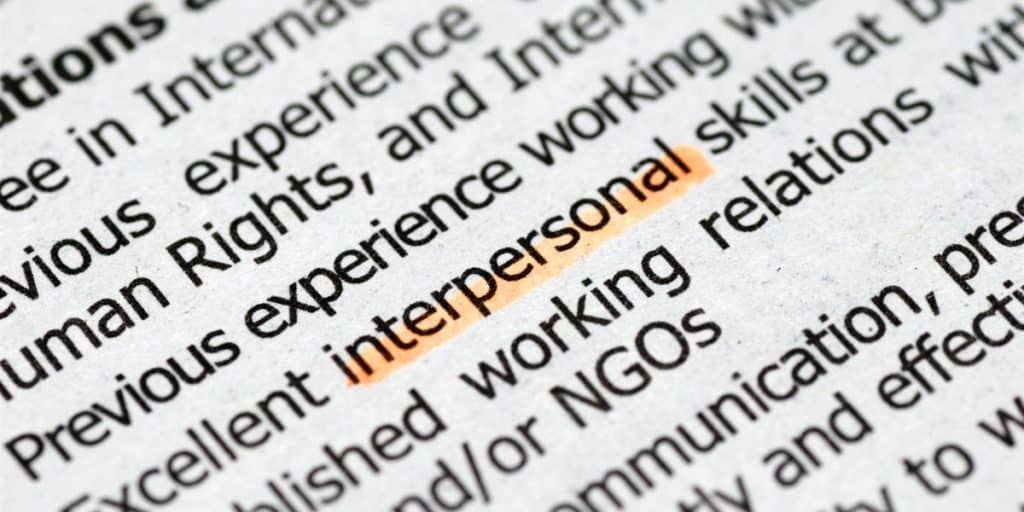Effective communication is as much about what we say as it is about what we don’t say. Studies show that as much as 93% of our communication is nonverbal. That’s right, our body language can reveal more about our thoughts and emotions than the words we choose to use. Understanding how to read nonverbal cues can be a powerful tool in any communication setting, from business negotiations to personal relationships.
By paying attention to subtle facial expressions, gestures, and postures, we can gain insights into a person’s true feelings and intentions. In this article, we will explore the power of body language and how to read nonverbal cues for effective communication. Whether you are looking to improve your communication skills or simply want to understand others better, the knowledge you gain from this article will be invaluable. So, let’s dive in and discover the secrets of nonverbal communication.
The Importance of Body Language in Communication
Body language is a powerful form of nonverbal communication that often speaks louder than our words. It consists of various signals and cues, such as facial expressions, gestures, and posture, which can reveal our true thoughts and emotions. These signals can often provide more accurate information about a person’s feelings, attitudes, and intentions than their spoken words.
Being able to read and interpret body language is essential for effective communication, as it helps us to understand the real message behind someone’s words. This is particularly important in situations where verbal communication may be limited, such as in noisy environments, or where people may be reluctant to express their true feelings openly. By paying attention to body language, we can gain insights into a person’s emotions and motivations, enabling us to respond appropriately and build stronger relationships.
Moreover, body language can also have a significant impact on the success of our interactions. A person who displays confident, positive body language is more likely to be perceived as trustworthy, competent, and persuasive. On the other hand, someone who exhibits negative or defensive body language may struggle to connect with others and convey their message effectively. Therefore, developing an awareness of our body language and learning to read nonverbal cues from others can greatly enhance our communication skills.
Types of Nonverbal Cues
There are several different types of nonverbal cues that people use to communicate their thoughts and feelings. These can be broadly categorized into facial expressions, gestures, posture, eye contact, proximity, and touch. Each of these categories contains a wealth of information that can help us to understand and interpret the messages being conveyed by others.
Facial expressions are perhaps the most immediately recognizable form of body language, as they convey a wide range of emotions and attitudes. From a smile that indicates happiness or approval to a frown that signals disapproval or confusion, our faces are constantly providing clues about our inner state. By learning to recognize and interpret these expressions, we can gain valuable insights into the emotions of those around us.
Gestures and body movements are other important aspect of nonverbal communication. These can include simple actions such as nodding in agreement, shrugging to indicate uncertainty, or crossing our arms to create a barrier between ourselves and others. By observing these gestures and understanding their meaning, we can gain a deeper understanding of a person’s thoughts and feelings.
Decoding Facial Expressions
Facial expressions are powerful indicators of a person’s emotions, and they can provide valuable information about their thoughts and feelings. Six universally recognized facial expressions correspond to the basic emotions of happiness, sadness, surprise, fear, anger, and disgust. By learning to identify and interpret these expressions, we can gain insights into the emotional state of others and respond accordingly.
Happiness is typically indicated by a smile, with the corners of the mouth turned up and the eyes often crinkling at the outer edges. This expression can signify pleasure, contentment, or amusement, and is generally considered to be a positive and approachable signal. Sadness, on the other hand, is characterized by a downturned mouth, drooping eyelids, and sometimes tears. Recognizing this expression can help us to offer support and empathy to those who may be struggling emotionally.
Surprise and fear can be similar in appearance, with both expressions involving widened eyes and raised eyebrows. However, the surprise is often accompanied by an open mouth, while fear may be indicated by a tense jaw and mouth. Being able to distinguish between these two emotions can enable us to respond appropriately to unexpected or potentially threatening situations. Anger is typically displayed through narrowed eyes, a furrowed brow, and a tense mouth, signalling displeasure or hostility. Finally, disgust is characterized by a wrinkled nose, raised upper lip, and a look of aversion or contempt. Recognizing this expression can alert us to potentially unpleasant or offensive stimuli.
Understanding Gestures and Body Movements
Gestures and body movements can convey a wide range of meanings and can be used to emphasize or clarify verbal communication. By paying attention to these nonverbal cues, we can gain a deeper understanding of a person’s thoughts, feelings, and intentions.
Some common gestures include nodding, which usually signifies agreement or understanding, and shaking the head, which indicates disagreement or disapproval. Hand gestures can also be used to emphasize a point or convey a specific message, such as waving to greet someone, pointing to indicate a direction, or making a “thumbs up” sign to show approval. However, it is important to be aware that the meaning of certain gestures can vary between cultures, and what may be considered polite or friendly in one country could be perceived as offensive in another.
Body movements can also provide valuable information about a person’s emotional state and intentions. For example, someone who is tapping their foot or fidgeting may be feeling nervous or impatient, while a person who is standing very still with their arms crossed may be trying to create a barrier and protect themselves from perceived threats. By observing and interpreting these movements, we can gain insights into the emotions and motivations of those around us.
Interpreting Posture and Stance
A person’s posture and stance can reveal a great deal about their confidence, emotions, and attitudes. By paying attention to the way someone is standing or sitting, we can gain insights into their thoughts and feelings, enabling us to respond appropriately and build stronger connections.
Confident, open posture is characterized by standing or sitting upright, with the shoulders back and the chest open. This stance can signal self-assurance and authority, making a person appear more trustworthy and competent. On the other hand, a slouched or hunched posture can indicate low self-esteem, insecurity, or a lack of confidence. Recognizing these postural differences can help us to adapt our communication style and approach to better suit the needs and preferences of those around us.
The positioning of the arms and legs can also provide valuable clues about a person’s emotions and intentions. For example, crossed arms can suggest defensiveness, resistance, or discomfort, while open arms can indicate a willingness to engage and connect with others. Similarly, crossed legs can convey a sense of protection or self-restraint, while open legs may suggest relaxation and openness. By interpreting these postural cues, we can gain a deeper understanding of a person’s emotional state and adjust our communication strategies accordingly.
The Role of Eye Contact in Communication
Eye contact is a powerful form of nonverbal communication that can convey a wealth of information about a person’s thoughts, emotions, and intentions. Maintaining eye contact during conversation can signal interest, attentiveness, and sincerity, helping to build trust and rapport. Conversely, avoiding eye contact can indicate discomfort, disinterest, or deception, potentially undermining the effectiveness of our communication.
The amount and duration of eye contact can also provide valuable insights into a person’s emotional state and intentions. Prolonged, intense eye contact can suggest attraction, confidence, or aggression, while brief, fleeting glances may indicate shyness, anxiety, or a lack of confidence. By paying attention to these subtle differences, we can gain a better understanding of the emotions and motivations of those around us.
However, it is important to be aware that cultural norms and expectations regarding eye contact can vary widely. In some cultures, direct eye contact is considered disrespectful or even aggressive, while in others, it is seen as a sign of honesty and trustworthiness. Therefore, it is essential to be sensitive to cultural differences when interpreting and responding to eye contact cues.
Proximity and Personal Space
The distance we maintain between ourselves and others during conversation can convey a great deal about our relationship, emotions, and intentions. Personal space is the invisible “bubble” that surrounds each of us, and the size of this bubble can vary depending on factors such as culture, personality, and context. By observing and respecting the boundaries of personal space, we can create more comfortable and effective communication experiences.
In general, closer proximity during conversation can indicate intimacy, trust, and emotional closeness, while greater distance can convey formality, detachment, or a desire for privacy. However, it is important to be aware that the dimensions of personal space can vary between cultures and individuals. For example, people from certain cultures may prefer to maintain more distance during the conversation, while others may feel comfortable standing closer together. By being sensitive to these differences and adjusting our proximity accordingly, we can create more positive and successful interactions.
In addition to the distance between individuals, the orientation of the body can also provide valuable information about a person’s emotions and intentions. For example, facing someone directly during conversation can signal openness, interest, and engagement, while turning the body away can indicate disinterest, discomfort, or a desire to disengage. By paying attention to these nonverbal cues, we can gain insights into the thoughts and feelings of those around us and respond appropriately.
Tips for Improving Your BodyLanguage
Improving your body language can have a significant impact on the success of your communication. By adopting more positive and confident nonverbal cues, you can enhance your credibility, build trust, and create stronger connections with others. Here are some tips for improving your body language.
First, pay attention to your posture. Stand or sit up straight, with your shoulders back and your chest open. This posture can convey confidence and authority, making you appear more trustworthy and competent. Conversely, slouching or hunching can indicate low self-esteem or insecurity, potentially undermining your message.
Second, make eye contact with the people you are speaking with. Maintaining eye contact can signal interest, attentiveness, and sincerity, helping to build trust and rapport. Be careful not to stare, however, as this can be perceived as aggressive or intimidating.
Third, use appropriate gestures and body movements to emphasize your message. For example, nodding can indicate agreement or understanding, while using your hands to illustrate a point can make your message more engaging and memorable. However, be careful not to overdo it, as excessive gestures can be distracting or even irritating.
Fourth, pay attention to the signals you are sending with your facial expressions. Smiling can convey warmth, friendliness, and approachability while frowning can indicate disapproval or displeasure. Be aware of your facial expressions and try to use them to reinforce your message.
Finally, be mindful of your personal space and the signals you are sending with your body orientation. Facing someone directly during a conversation can signal engagement and interest while turning away can suggest disinterest or discomfort. Adjust your body language to match the situation and the people you are speaking with.
How to Read Others’ Body Language Effectively
In addition to improving your body language, it is important to be able to read and interpret the nonverbal cues of others. By paying attention to their facial expressions, gestures, posture, eye contact, and personal space, you can gain valuable insights into their thoughts, feelings, and intentions.
When reading others’ body language, it is important to consider the context and the individual’s unique personality and cultural background. What may be a positive or negative signal in one situation may be interpreted differently in another? Therefore, it is important to be sensitive to the nuances of nonverbal communication and to avoid making assumptions or jumping to conclusions.
One effective way to read others’ body language is to observe their behaviour over time, looking for patterns and changes in their nonverbal cues. For example, if someone typically maintains good eye contact but suddenly starts avoiding it, this may be a sign that they are feeling uncomfortable or anxious. Similarly, if someone usually stands with their arms crossed but suddenly starts using more open gestures, this may indicate that they are becoming more relaxed or open to communication.
It is also important to consider the overall context and situation when interpreting nonverbal cues. For example, someone who is fidgeting or tapping their foot in a noisy and chaotic environment may be simply trying to cope with the stress of the situation, rather than indicating nervousness or impatience.
Finally, it is important to be aware of cultural differences in nonverbal communication. What may be considered polite or appropriate in one culture may be perceived as rude or offensive in another. Therefore, it is essential to be sensitive to cultural differences and to seek to understand and respect the nonverbal cues of people from different backgrounds.
The Impact of Cultural Differences on Body Language
Nonverbal communication can vary widely between different cultures, and what may be considered polite or appropriate in one culture may be perceived as rude or offensive in another. Therefore, it is important to be aware of these differences and to adapt your nonverbal cues accordingly.
For example, in some cultures, direct eye contact may be seen as a sign of disrespect or aggression, while in others, it is considered a sign of honesty and sincerity. Similarly, the use of personal space can vary widely between cultures, with some cultures preferring more physical proximity during conversation than others.
Gestures can also vary widely between cultures, with some gestures that are considered polite or friendly in one culture being perceived as rude or offensive in another. For example, the “thumbs up” gesture that is commonly used to indicate approval in Western cultures may be seen as a rude gesture in some other cultures.
It is important to be aware of these differences and to seek to understand and respect the cultural norms and expectations of the people you are communicating with. This can help to avoid misunderstandings and build stronger relationships based on mutual respect and understanding.
Conclusion
The power of body language in communication cannot be overstated. By understanding and interpreting nonverbal cues, we can gain valuable insights into the thoughts and feelings of those around us. However, it is important to be aware of cultural differences in nonverbal communication, as what may be considered polite or appropriate in one culture may be perceived as rude or offensive in another. By being sensitive to cultural differences and seeking to understand and respect the nonverbal cues of people from different backgrounds, we can help to avoid misunderstandings and build stronger relationships.






